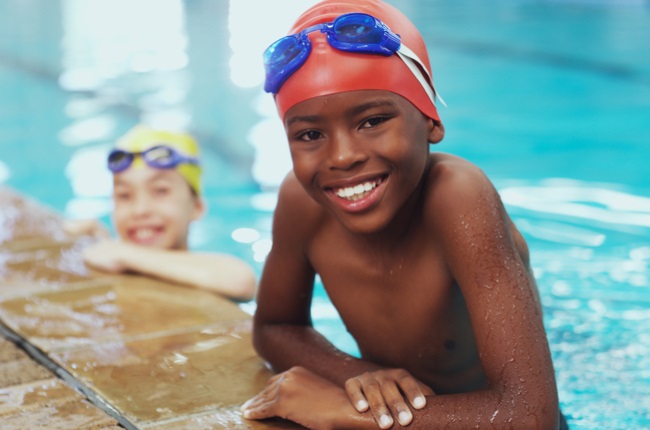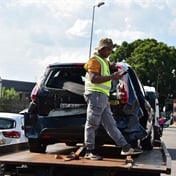
As the summer holidays approach there's a dark side to this festive period: heartbreaking stories of kids drowning dominate news headlines.
About 600 children drown in our country’s waters each year, the National Sea Rescue Institute (NSRI) estimated last summer, and kids under the age of five are the most vulnerable at the beach, swimming pools, dams and even splash pools, baths and buckets.
But South Africa is not unique in this. "Drowning is the third leading cause of unintentional injury death worldwide, accounting for 7% of all injury-related deaths and there are an estimated 236 000 annual drowning deaths worldwide," according to recent World Health Organisation (WHO) data, "and age is one of the major risk factors with the highest drowning rates among children aged 1-4 years, followed by children 5-9 years, the UN health agency says.
Here's how to keep your children safe.
Read more | It’s national children’s day – here’s how to bond with your kids
The number one water safety rule
It's advised that swimmers and beach-goers avoid crowds, wear their masks when not in the water, and maintain at least a one-metre distance from others when swimming or in swimming areas.
Supervising children
Even those in shallow water or those who know how to swim.
This is the most important factor in keeping kids safe in water, says Pearl Mbomvu, a Soweto-based swimming coach and instructor. She adds that a child can drown in as little as 20 seconds.
During the festive season, parents might indulge in alcohol while their children are enjoying themselves in nearby water.
“Being under the influence of alcohol while driving is incredibly dangerous – the same goes for when you’re swimming or supervising children swimming in a pool or at the beach,” Mbomvu says.
Alcohol can impair an adult’s ability to notice that a child is in danger, or act quickly and correctly if they need help.
Riptides
Swim in the ocean only where there are lifeguards on duty.
If you get caught in a rip current, try not to panic. Don’t try to swim against the current – it’ll only exhaust you.
“The fear and panic to get out of the water creates frustration,” Mbomvu says. “This leads to a rapid heart rate and it becomes difficult to think clearly about what to do to save ourselves.”
Let the current take you. It’ll first suck you in, then spit you out.
- Stay afloat by treading water gently – move your arms and legs in circular movements.
If you see someone in trouble, immediately call emergency services on 112 from a cellphone. Don’t get into the water yourself, even if it’s a family member – chances are you will get caught in the rip current as well.
Signs and flags
When going to the beach, opt for one with a “blue flag” status, of which South Africa has 45. They’re considered our safest, most family-friendly beaches.
There are six blue-flag beaches in the Eastern Cape, six in KwaZulu-Natal and 33 in the Western Cape. A Google search will take you to websites that list them.
“Always be on the lookout for dangerous swimming conditions,” Mbomvu says.
“This includes swimming areas with no shallow- and deep-end signs, overcrowding, dams also used as dumping sites, and beaches with no flags or lifeguards on duty.”
Getting into the water
Mbomvu says whether it’s a pool or dam, it’s vital that children know the correct way to enter a body of water.
“Severe injuries can occur when children jump or dive head-first into shallow water.” When entering a pool, use the steps or the swivel method. Start in a sitting position, with legs in the water, place both hands on one side of your body and then turn your back to the water. Lower yourself gradually, keeping hold of the poolside at all times.
“It’s important for a child to find their balance using this method,” Mbomvu says.
Read more | Still struggling to explain Covid-19 to your kids? Don't worry, Conora O'clock is here!
Secondary drowning
If your child has had a near-drowning incident, keep an extra close watch on them for a few days after the incident.
They could still experience complications. This is called “dry” or “secondary” drowning, which is when water is taken in through the nose or mouth and causes the windpipe to become constrained.
Symptoms are coughing, chest pain, trouble breathing and fatigue. If this happens, seek medical attention as soon as possible.
Basic CPR
It might be your first instinct to jump into a pool to save someone in need.
“But the best thing you can do is to use a long object such as a broom, pool noodle or belt to help the person,” Mbomvu says.
“This applies mainly to helping older children whose weight might make it challenging to drag them out of water as they’re holding on to you.”
As a parent supervising children, it’s critical to be familiar with lifesaving techniques, including basic CPR.
Remove the child from the water and place them on a firm surface. Check to see if they’re breathing by placing your cheek or ear to their mouth. Call their name to see if they’re conscious. If they’re not breathing, call an ambulance and then begin the CPR process.
- Tilt their head back slightly and lift the chin.
Extra sources: webmd.com, nsri.org.za, healthline.com



















